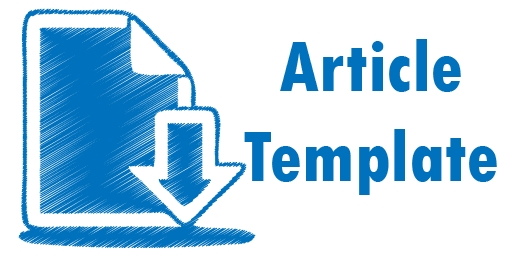The Effectiveness of E-Modules on Discovery Learning Based Colloid System Materials on High School
Abstract
The 2013 curriculum implemented by the government is expected to improve the quality of education. The scientific approach is the approach used in K13, which is a science-based approach. The research carried out is a follow-up study of the development of discovery learning-based colloid system e-modules for high school/MA students which has been tested for validity and practicality, but its effectiveness has not been tested. The purpose of this experiment is to see the effectiveness of using discovery learning e-modules for high school/MA students. The type of research used is pre-experimental using One Group-Pretest-Postest. The results obtained from this study are t-test with a significance level of 0.05, namely sig(2-Tailed) data obtained 0.000 proving that H0 is rejected, because the value of Sig <0.05 and H1 is accepted. The result of the N-Gain value in the sample class is 0.816. Based on the results of this study, it shows that the application of this e-module is very good in achieving goals and can develop learning outcomes for high school studentsReferences
Balim, A.G. 2009. The Effect of Discovery Learning on Student’s Success and Inquiry Learning Skills, Egitim Arastirmalari Eurasisan. Journal of Educational Research, 35, 1-20
Bird, Tony. 1993. Kimia Fisik Untuk Universitas. PT. Gramedia: Jakarta.
Daryanto. 2014. Pendekatan Pembelajaran Saintifik Kurikulum 2013. Yogyakarta: Gava Media.
Departemen Pendidikan Nasional. 2008. Penulisan Modul, Jakarta: Departemen Pendidikan Nasional, Direktorat Jendral Manajemen Pendidikan Dasar dan Menengah, Direktorat Pembinaan Sekolah Menengah Atas.
Efendi. L. A. 2012. Pembelajaran Matematika Dengan Model Penemuan Terbimbing Untuk Meningkatkan Kemampuan Representasi dan Pemecahan Masalah Matematis Siswa SMP. Jurnal Penelitian Pendidikan, 13(2).
Hanson, David. M. 2005. Designing Process-Oriented Guided-Inquiry Activities In Faculty Guidedbook: A Comprehensive Tool for Improving Faculty Performance, ed. S.W. Beyerlein and D.K. Apple, Lisle, IL: Pacific Crest.
Joly, J. F., Stapel, D. A., & Lindenberg, S. M. 2008. Silence and Table Manners: When Environments Activate Norms. Personality and Social Psychology Bulletin, 34(8), 1047-1056. https://doi.org/10.1177/0146167208318401
Kemendikbud, R. I. 2013. Bahan Pelatihan Kurikulum 2013. Jakarta: Kemdikbud.
Latisma. 2011. Evaluasi Pendidikan. Padang : UNP Press.
National Cancer Institute. 2019. Taking Time: Support for People with Cancer (NIH Publication No.18-2059). U.S. Department of Health and Human Services, National Institute of Health. https://www.cancer.gov/publications/patient-education/takingtime.pdf
Permendikbud No. 59. 2013. Kurikulum 2013 Sekolah Menengah Atas/Madrasah Aliyah, Jakarta: Departemen Pendidikan Nasional.
Plomp, Tjeerd. 2007. Educational Design Research: An Introduction to Educatioal Research. Enschede, Netherland: Nationalintitute Curiculum Development.
Sanchiz, M., Chevalier, A., & Amadieu, F. 2017. How Do Older and Young Adults Start Searcing for Information? Impact of Age, Domain knowledge and Problem Complexity of The Different Steps of Information Searching. Computers in Human Behavior, 72, 67-78. https://doi.org/10.1016/j.chb.2017.02.038
Sanjaya, Wina. 2006. Strategi Pembelajaran Beriontasi Standar Proses Pendidikan. Jakarata: Kencana
Sinambela, P, N. 2017. Kurikulum 2013 dan Implementasinya dalam Pembelajaran. Generasi Kampus, 6(2).
Stegmeir, M. 2016. Climate Change: New Discipline Practices Promote College Access. The Jurnal of College Admission, (231), 44-47. https://www.nxtbook.com/ygsreprints/NACAC/nacac¬_jca_spring2016/#/4
Sugiyono. 2013. Metode Penelitian Pendidikan Kombinasi (Mixed Methods). Bandung: Alfabeta.
Copyright toward articles published by Entalpi Pendidikan Kimia is hold by Entalpi Pendidikan Kimia. In the other side, Entalpi Pendidikan Kimia also applied CC Attribution 4.0 which means you could 1) share — copy and redistribute the material in any medium or format; and 2) adapt — remix, transform, and build upon the material; for any purpose, even commercially. As long as you give us attribution — You must give appropriate credit, provide a link to the license, and indicate if changes were made. You may do so in any reasonable manner, but not in any way that suggests the licensor endorses you or your use. Entalpi Pendidikan Kimia also applied Open Access toward each published articles, so the published content will be available freely for public.





